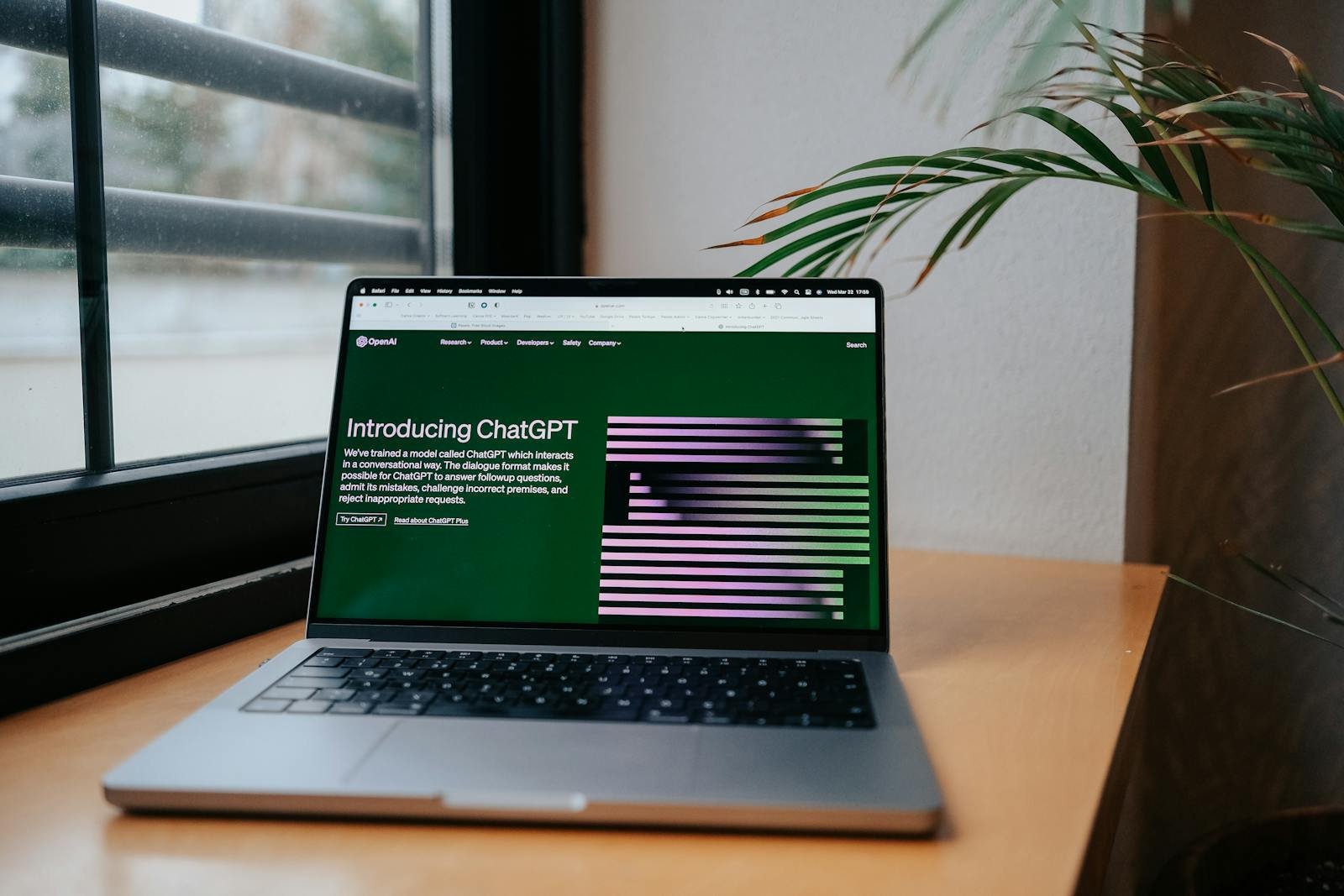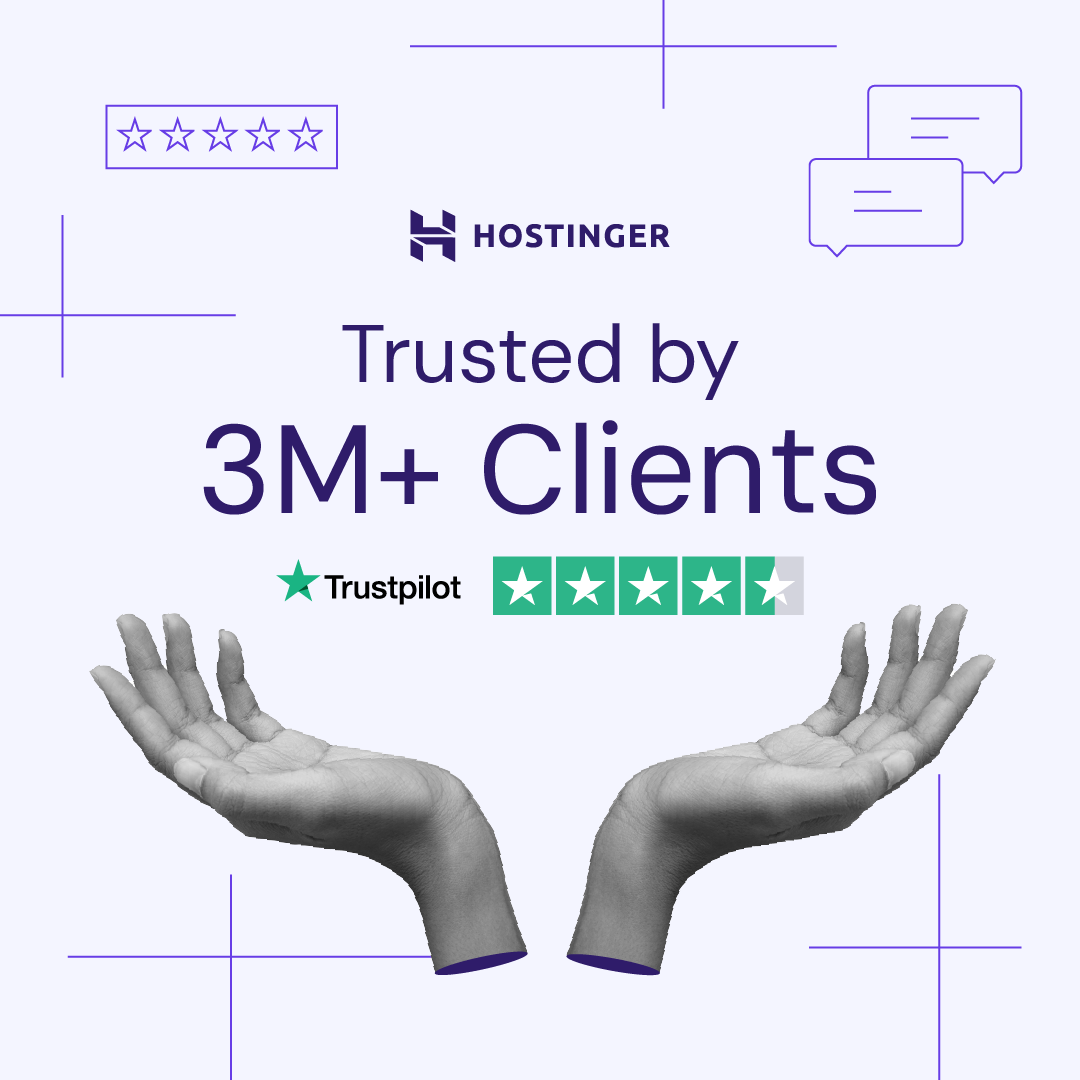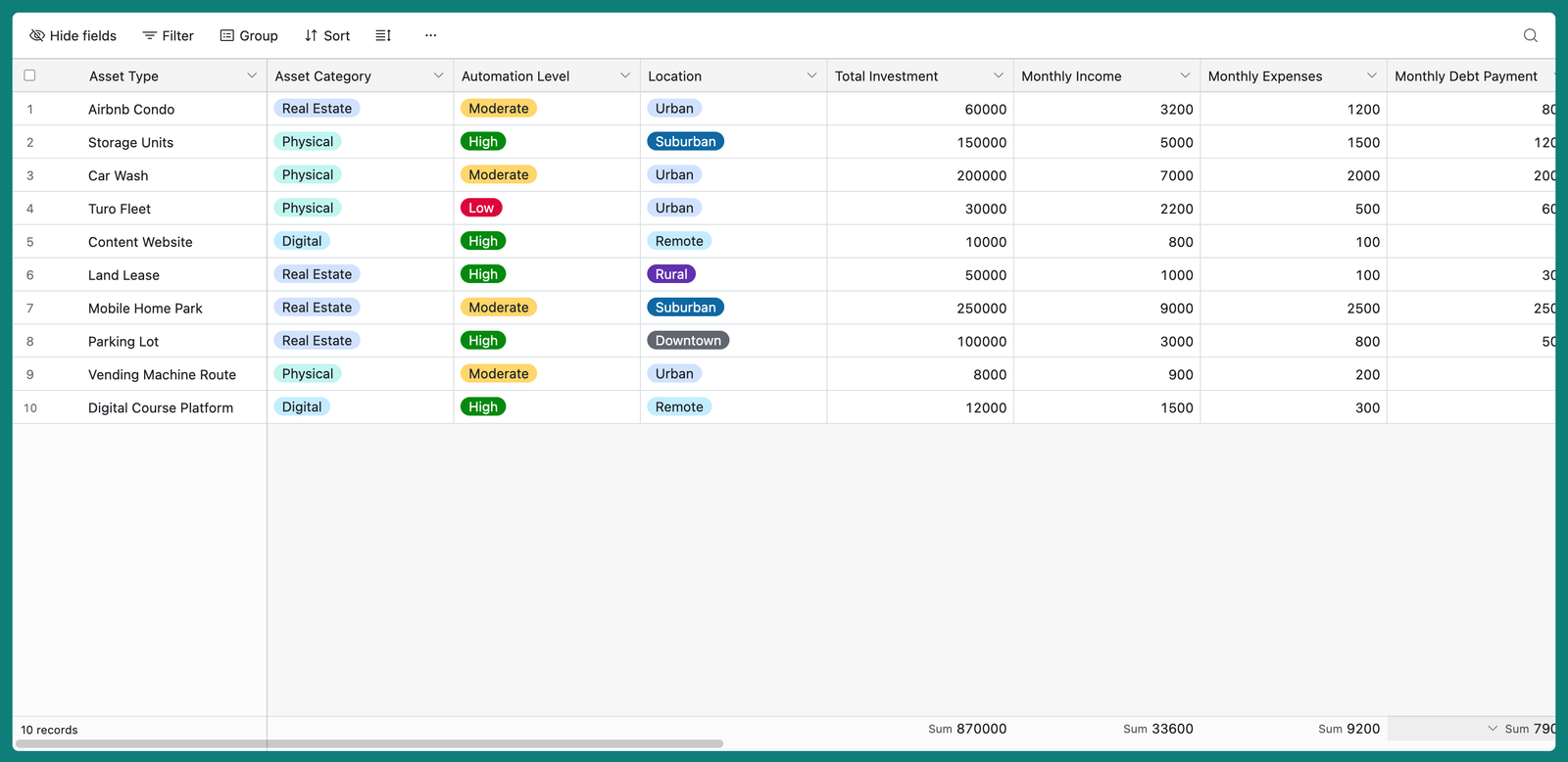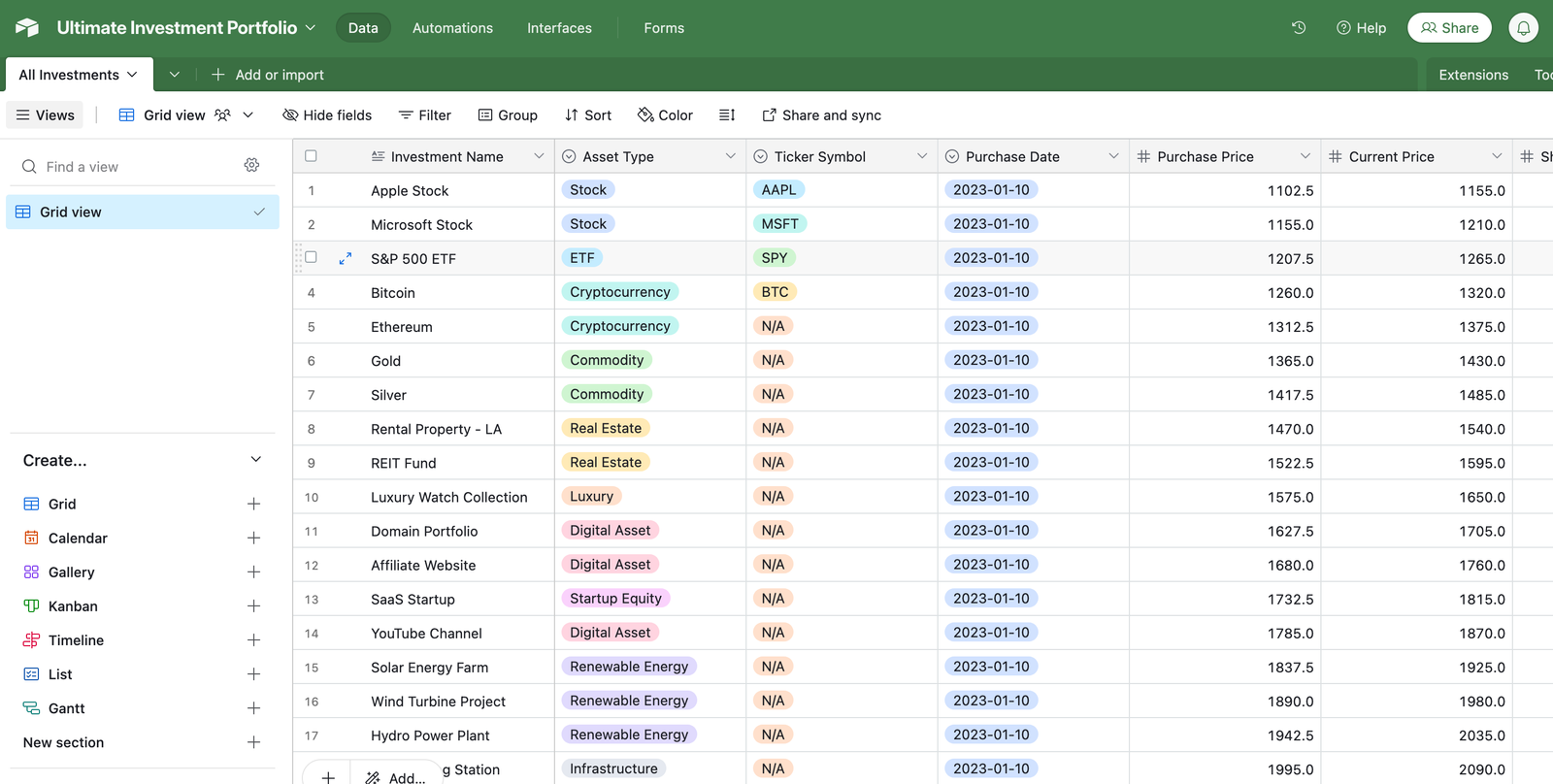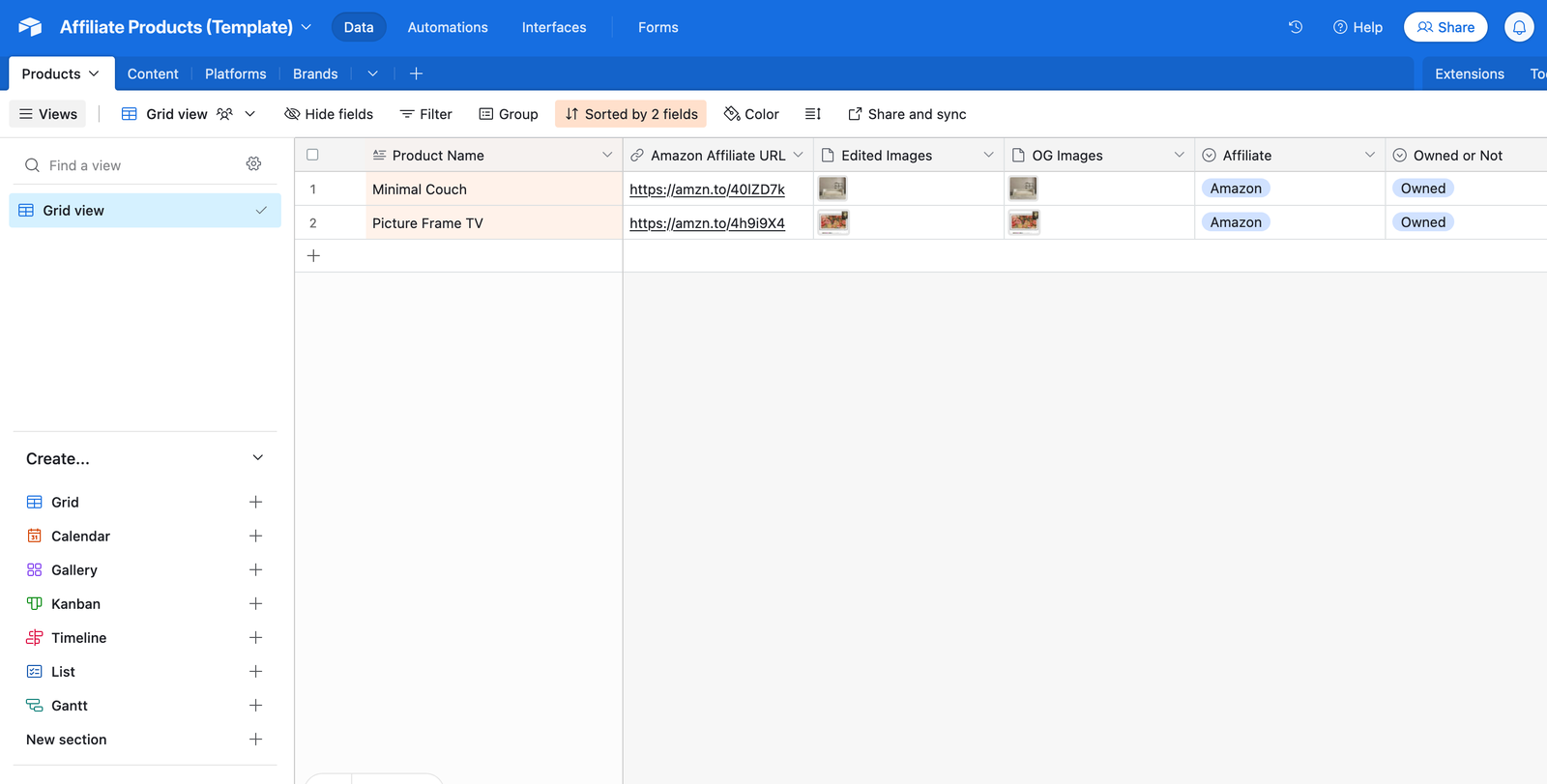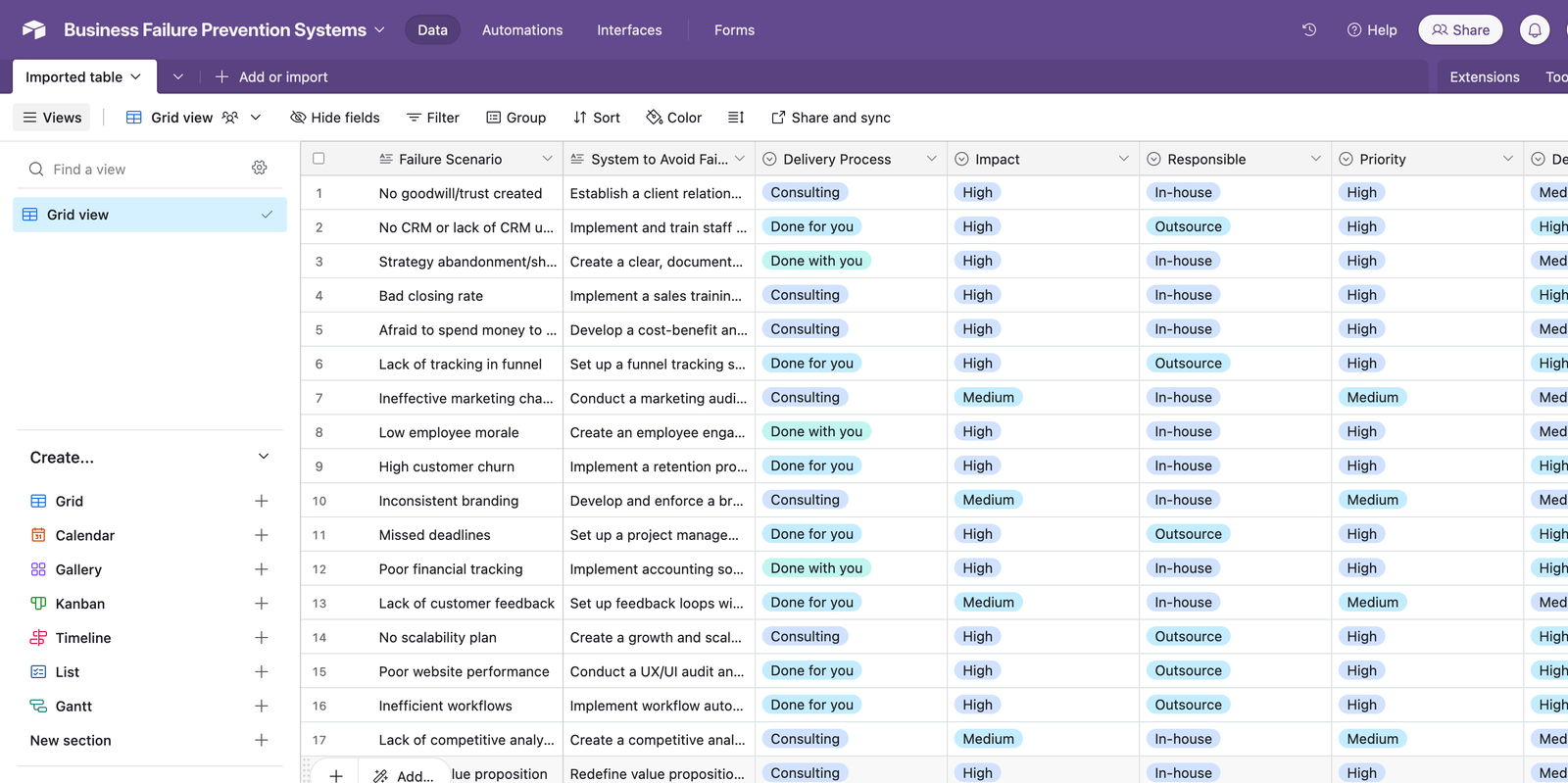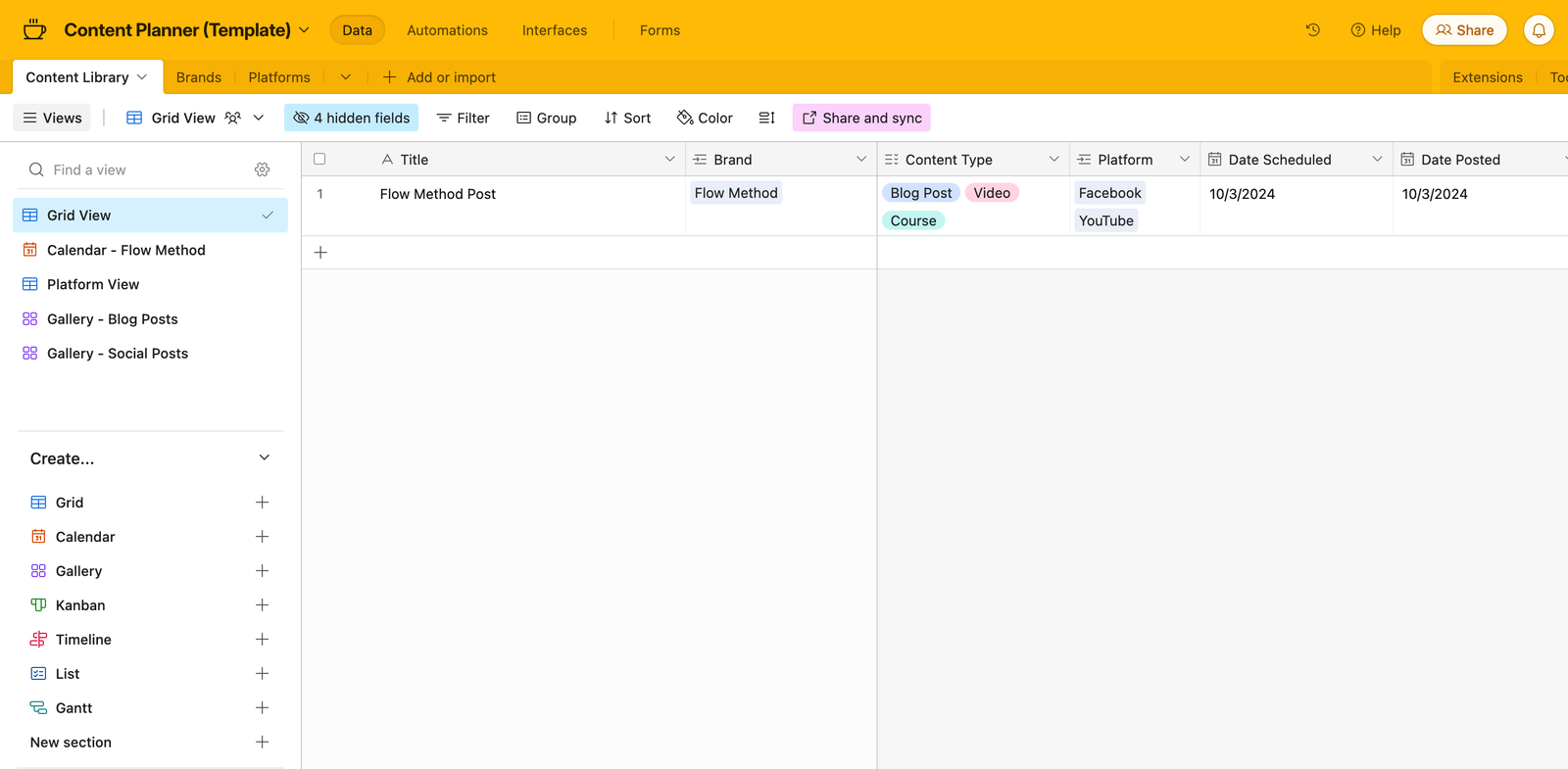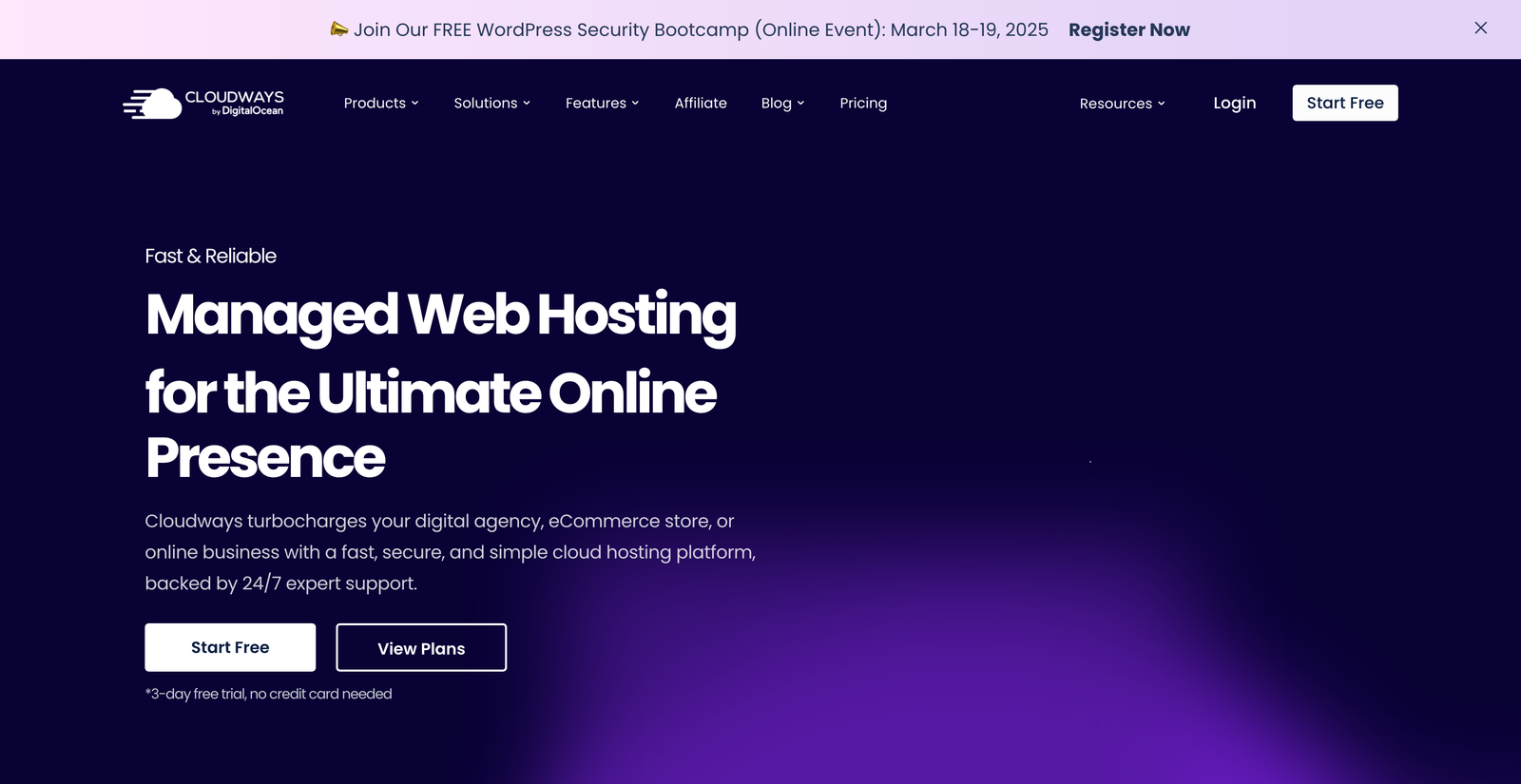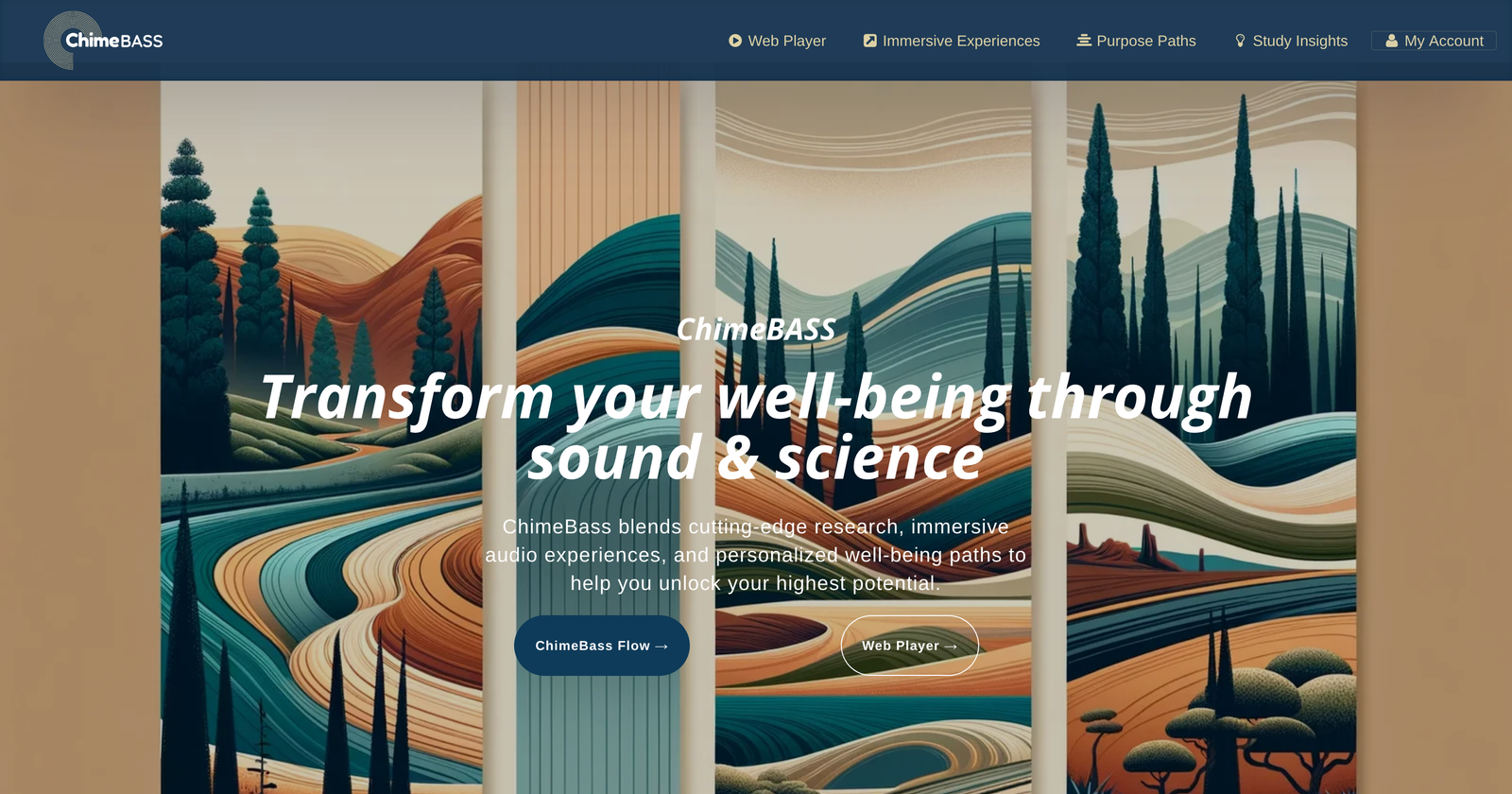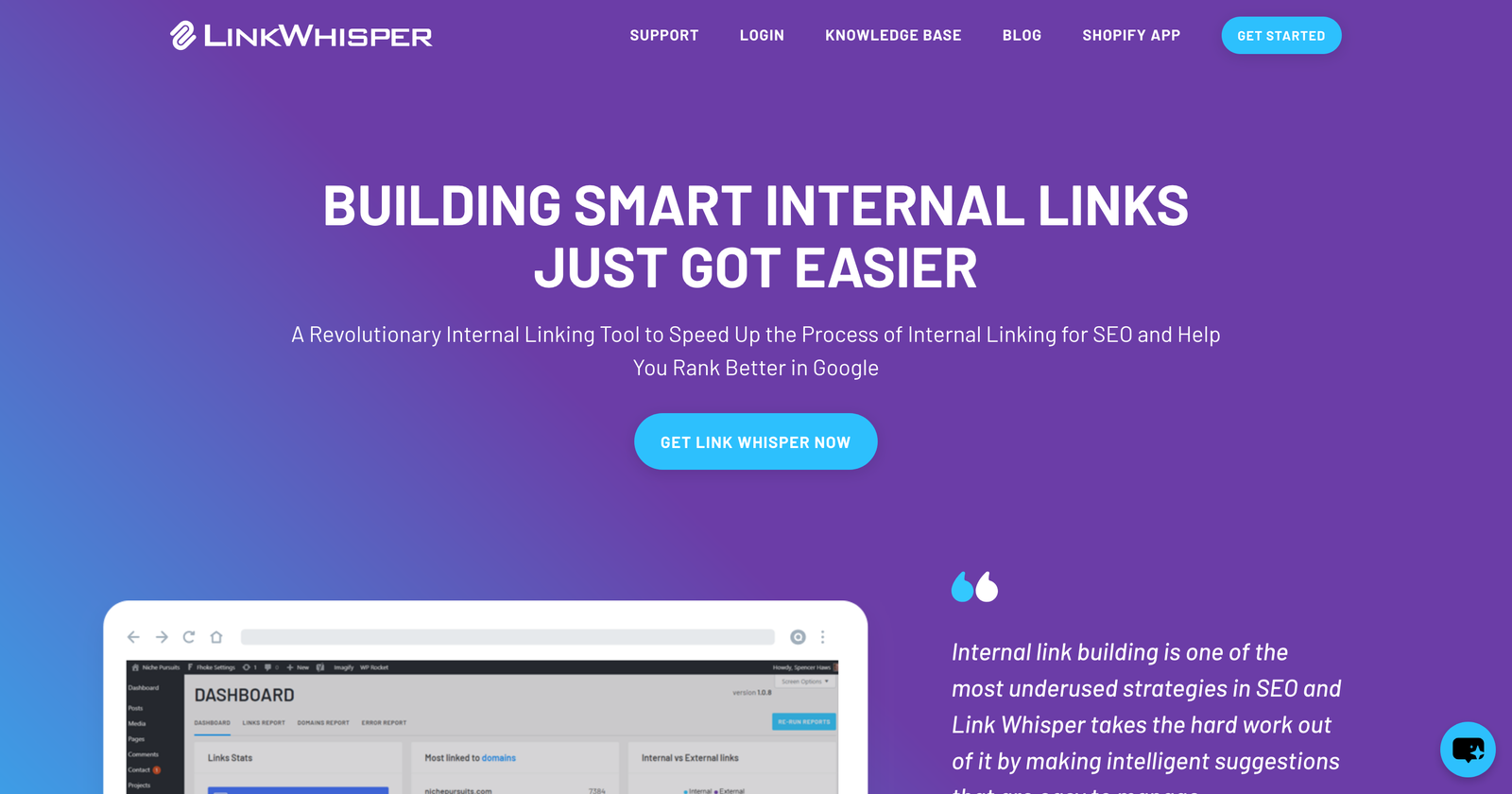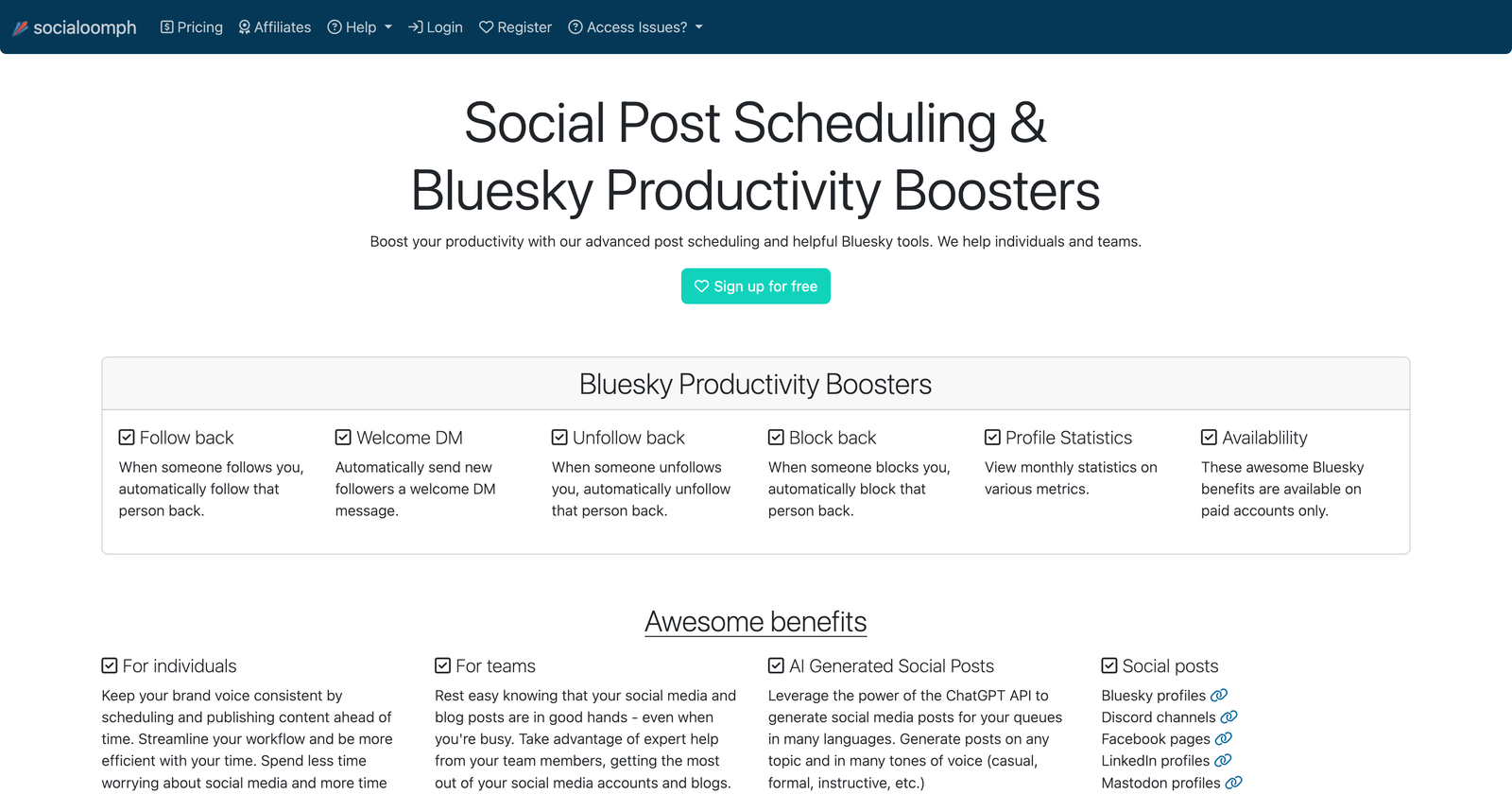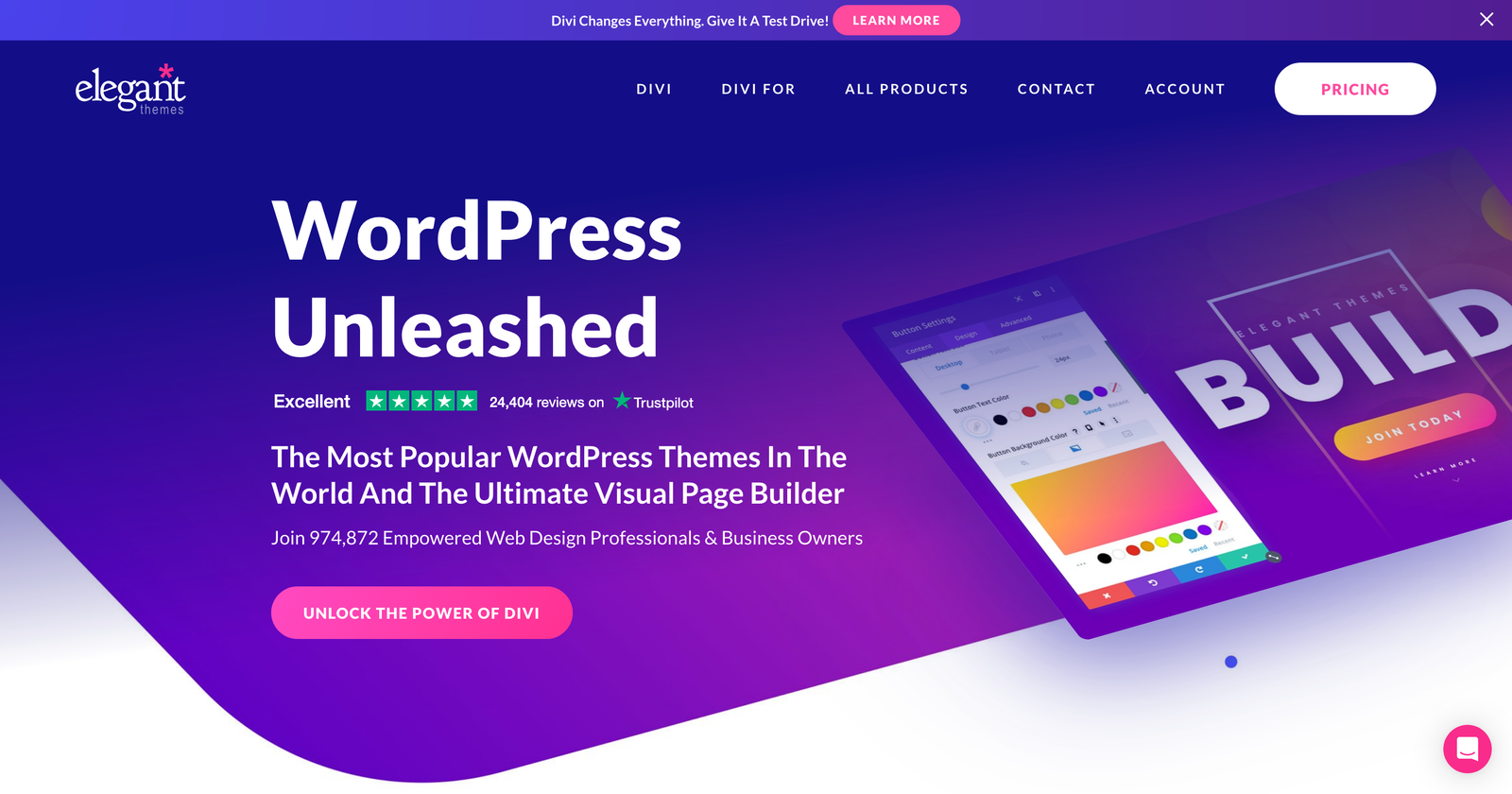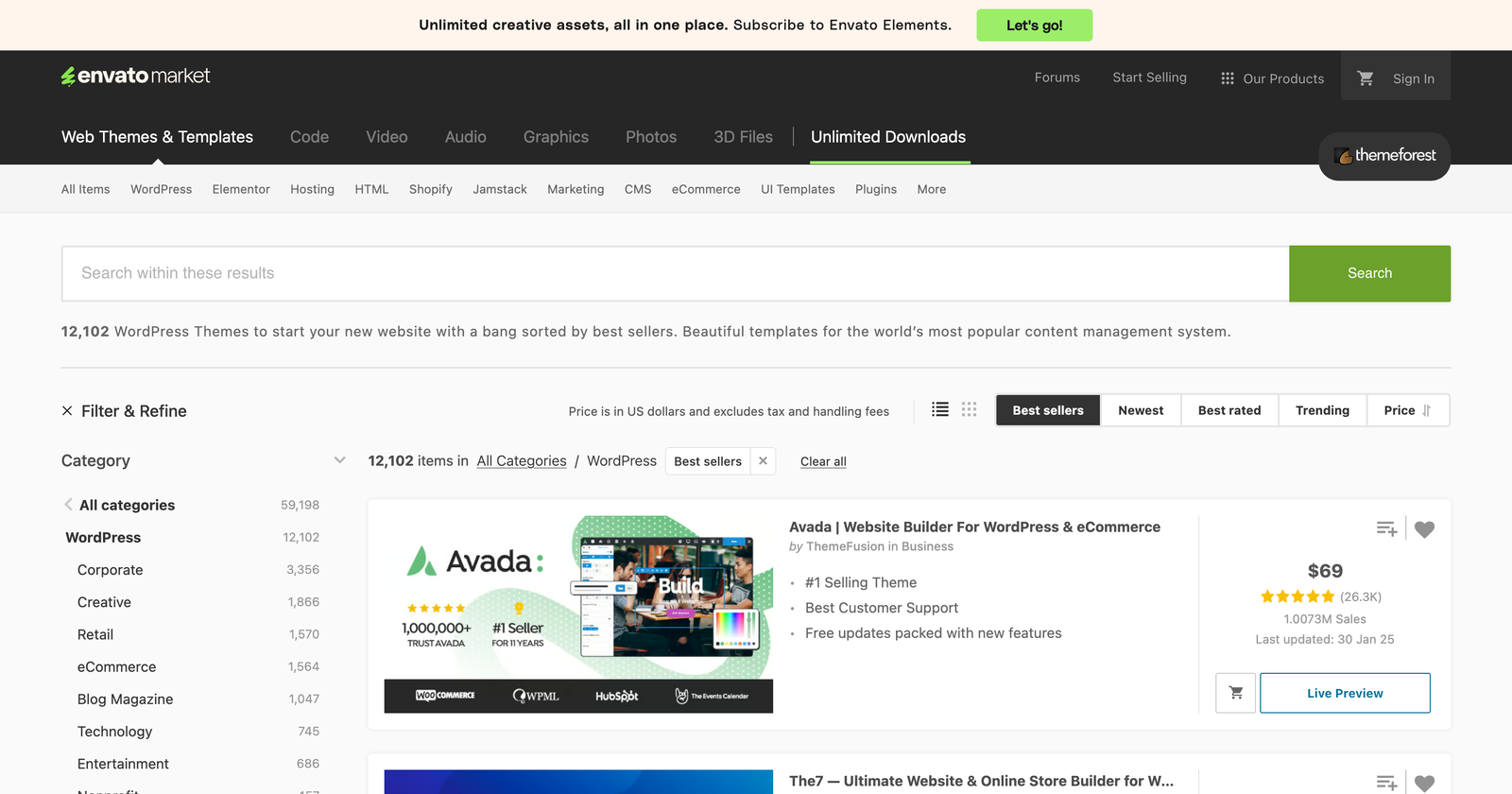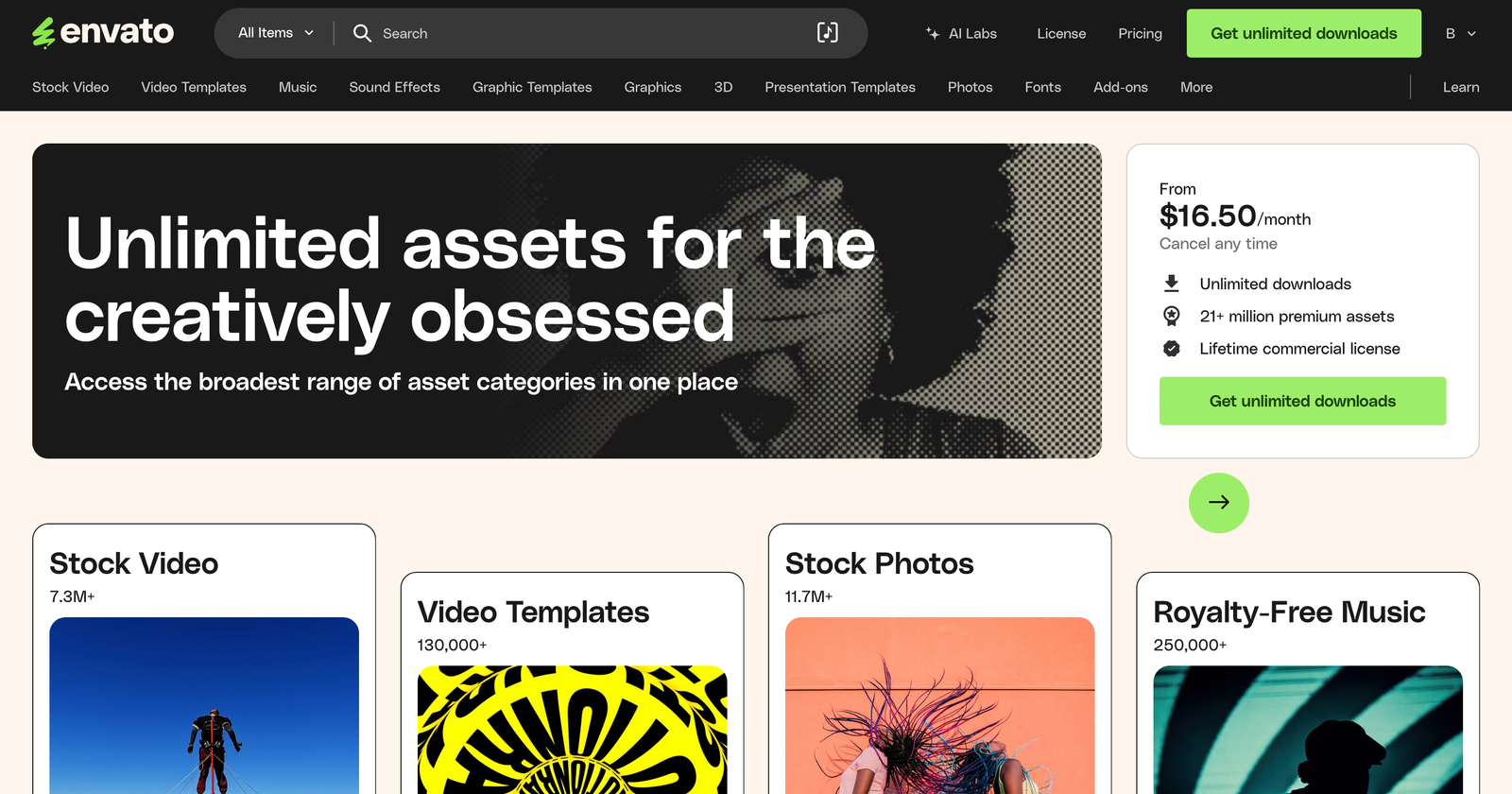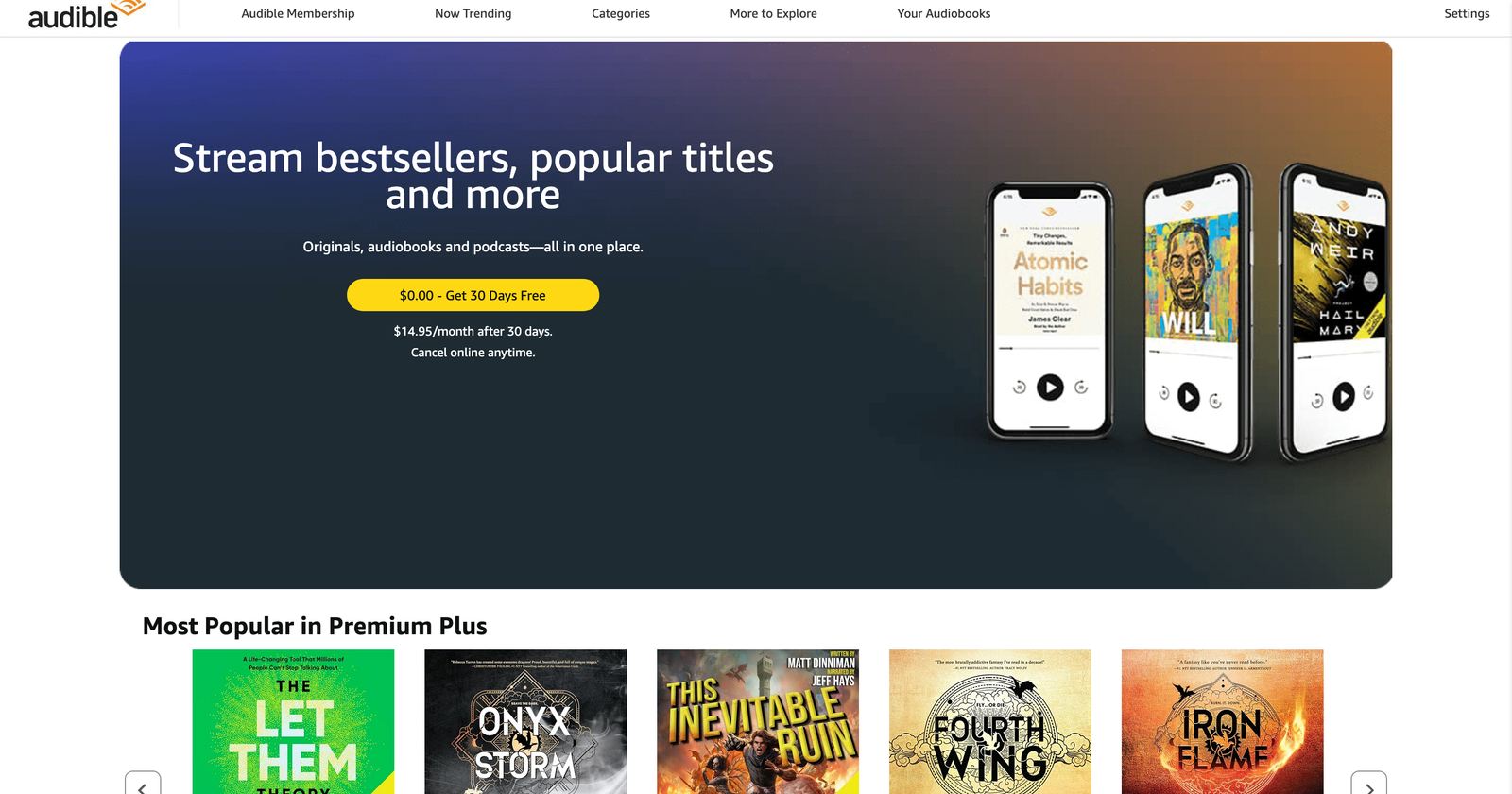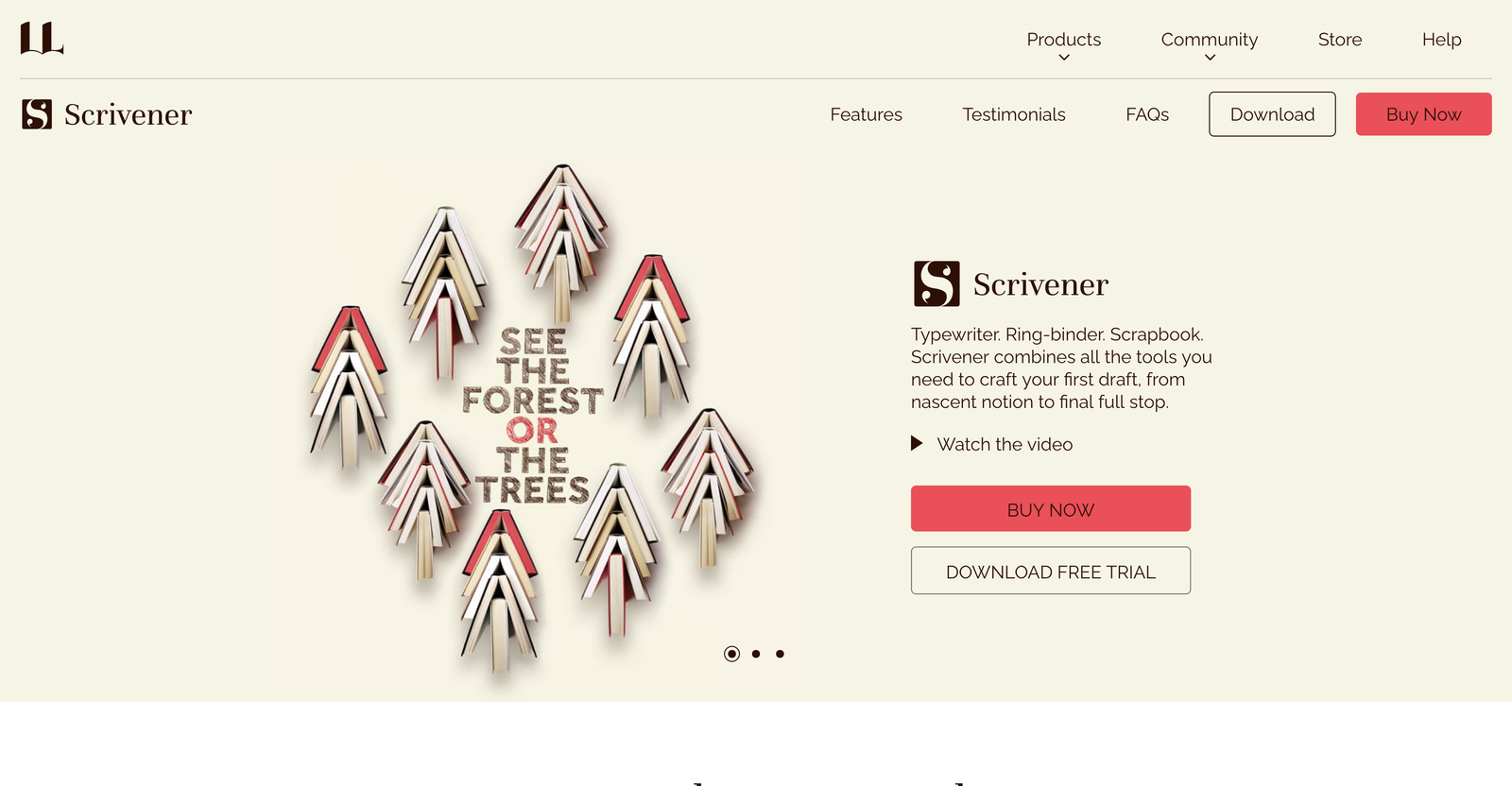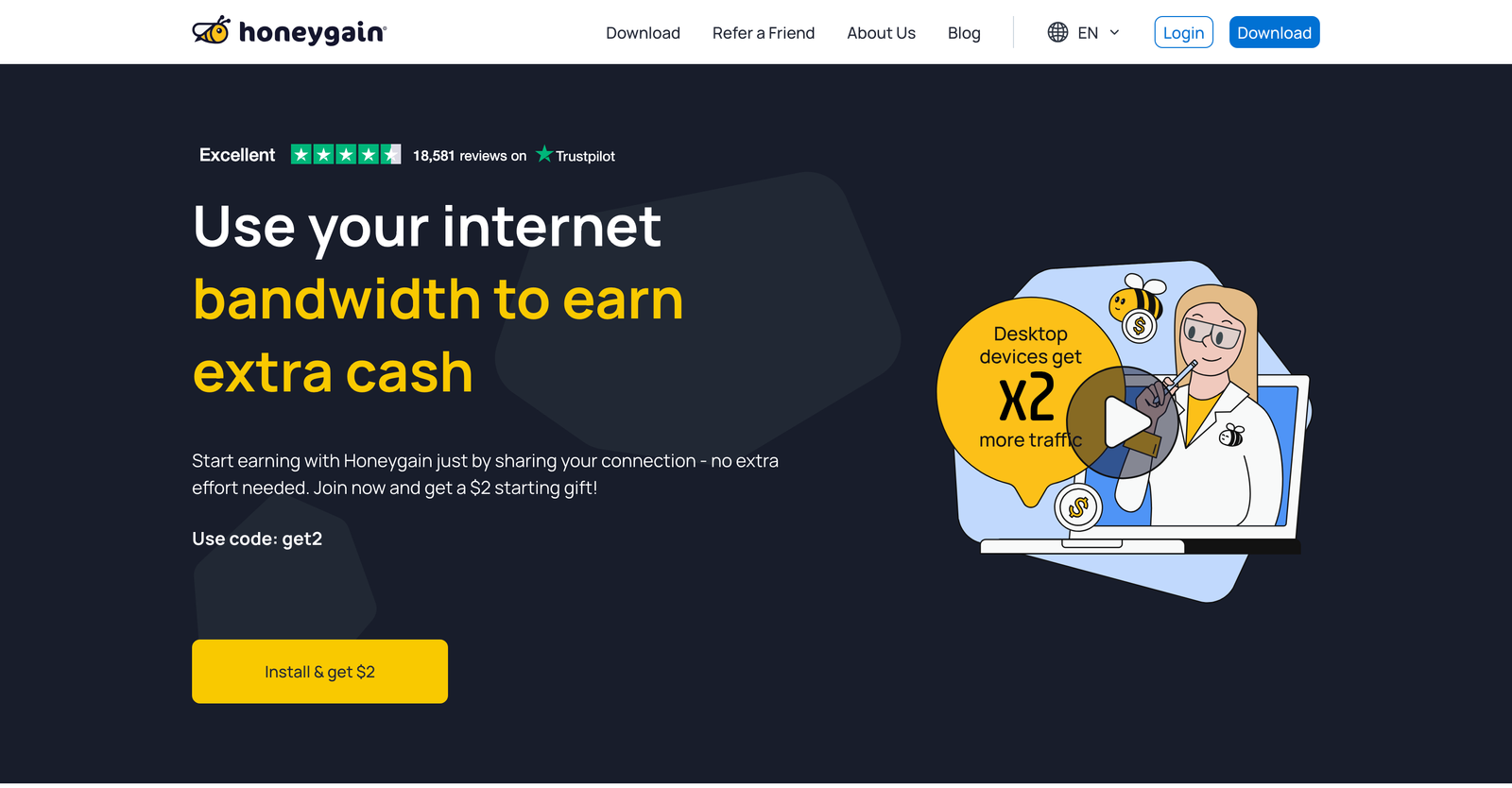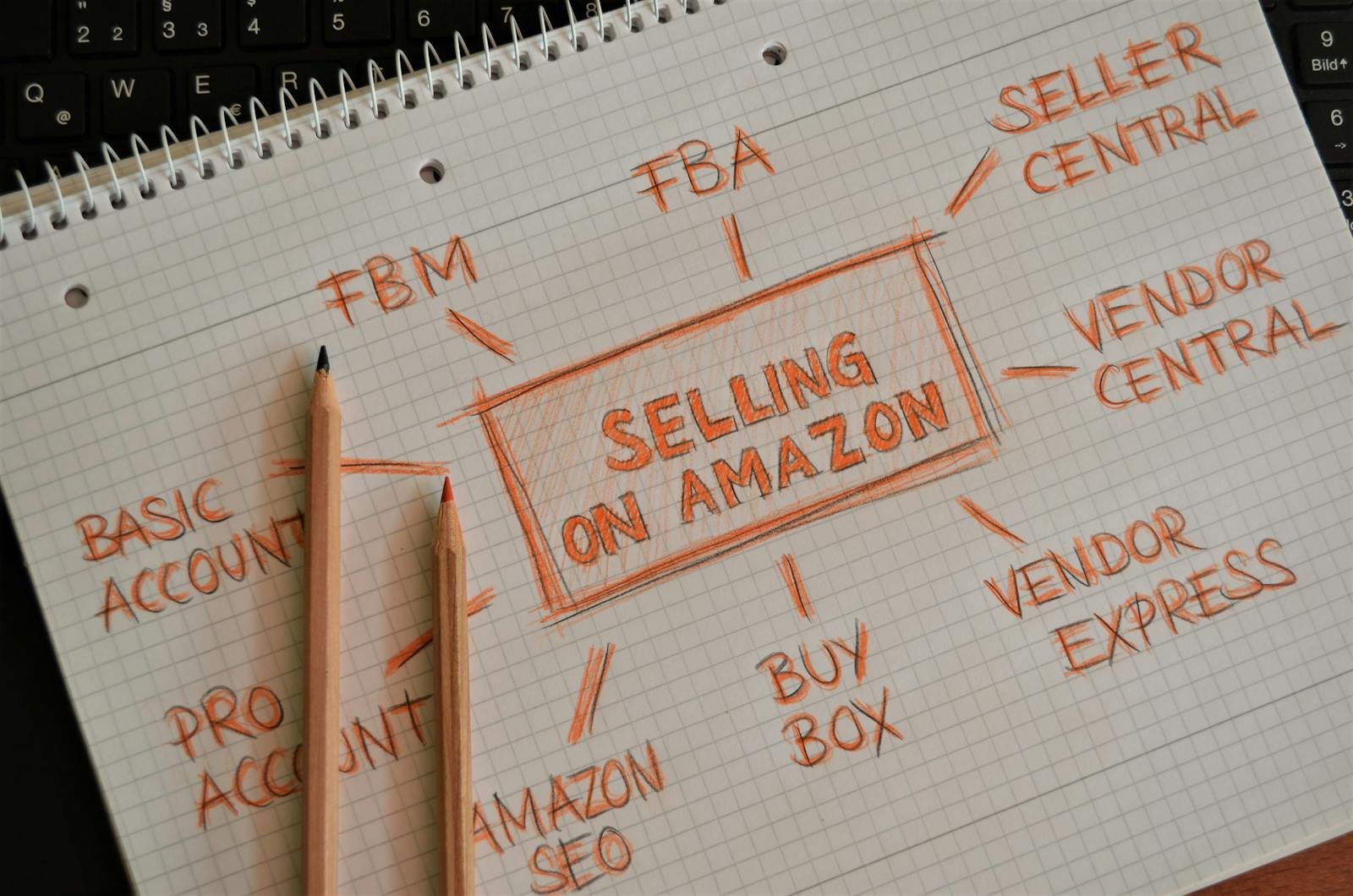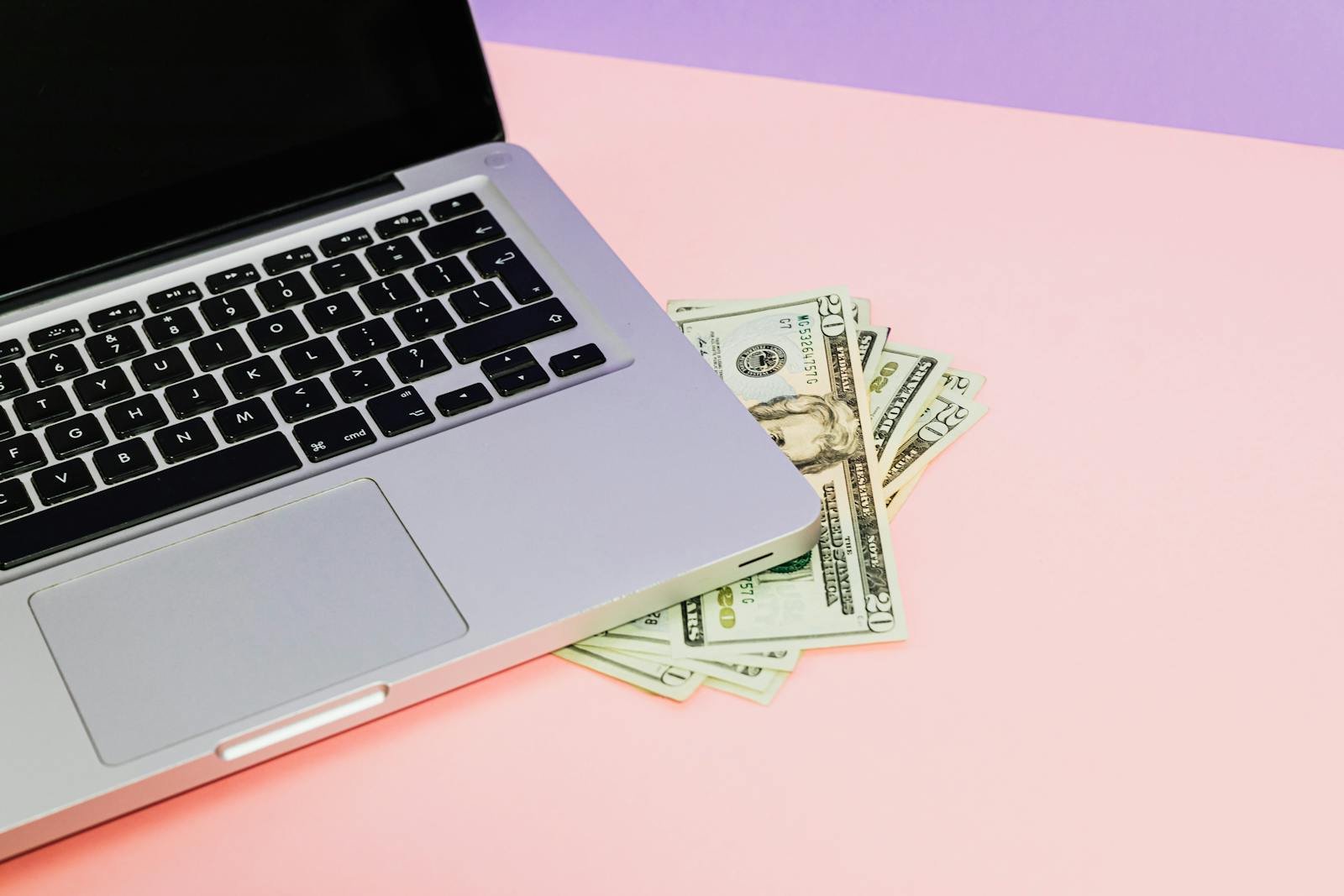AI-Powered SaaS Business Insights
A high-growth,
scalable business model
Discover how to build, scale, and automate an AI-powered SaaS business with recurring revenue, automation, and high scalability.
AI-Powered SaaS Business Insights
A high-growth,
scalable business model
Discover how to build, scale, and automate an AI-powered SaaS business with recurring revenue, automation, and high scalability.
AI-Powered SaaS Business Insights
🏆 Overall Business Viability Score
💰 Profitability Score
🚀 Scalability Score
⏳ Time to Profitability Score
💸 Startup Cost Score
🛠️ Operational Complexity Score
📢 Marketing & Customer Acquisition Score
🤖 Automation & Passive Income Score
📈 Market Demand Score
⚠️ Competition Level Score
🌱 Sustainability & Longevity Score
📊 Revenue Stability Score
🏗️ Barrier to Entry Score
🎯 Target Market Size Score
🔧 Skill & Experience Requirement Score
📍 Location Flexibility Score
💼 Legal & Compliance Complexity Score
🔥 Economic Resilience Score
🔄 Recession Proof Score
🏁 Exit Strategy Score
Business Idea Overview:
An AI SaaS business provides automated, subscription-based tools for businesses and individuals. By leveraging AI models and automation, it generates recurring revenue with high scalability and minimal overhead.
📊 Earning Potential
🛠️ Best Platforms & Tools
Use Python, JavaScript, OpenAI API, AWS, Firebase for development and Stripe, Make, Intercom for automation and payments.
⚠️ Biggest Challenge
Common hurdles include AI model reliability, high development costs, and retaining users in a competitive market.
💸 Startup Costs & Investment
✔️ Low-cost (API-based SaaS): $5K – $15K
✔️ Mid-range (Custom AI + small team): $15K – $50K
✔️ High-end (Enterprise AI, full dev team): $50K – $250K
Get a sleek, conversion-optimized Product Landing Page Template designed for AI-powered SaaS and automation tools. Drive sign-ups, showcase features, and grow your business effortlessly.
🔗 Get the Product Landing Page Template and scale your SaaS today! 🚀
📢 Customer Acquisition Strategy
Leverage SEO, freemium trials, LinkedIn outreach, retargeting ads, and B2B partnerships to attract and retain users.
📈 Ideal Business Model
AI SaaS thrives on monthly subscriptions, enterprise licensing, API-based pay-per-use pricing, and white-label solutions.
⏳ Time to Profitability
A lean AI SaaS MVP can become profitable in 3-6 months, while enterprise SaaS takes 12+ months.
🚀 Key to Scaling
Automate onboarding, customer support, and marketing, expand API offerings, and optimize pricing tiers for growth.
🤖 Automation & Passive Income Potential
A fully automated SaaS can generate revenue 24/7 through subscriptions and self-service customer support. View Automation Tools
🏁 Exit Strategy
Sell via MicroAcquire, Empire Flippers, merge with larger SaaS companies, or license AI models for passive income.
🌱 Sustainability & Longevity
AI adoption is increasing, making SaaS a long-term, highly scalable business with recurring revenue.
🔄 Market Trends & Demand
AI SaaS is booming in chatbots, AI-generated content, automation tools, and predictive analytics.
🆚 Competition Level
Highly competitive—stand out by focusing on niche automation, AI accuracy, and seamless integrations. Sign up for SEO Flow and start your keyword research today. SEOFlow.app
📍 Location Flexibility
Completely remote-friendly, scalable with a global team and cloud-based infrastructure.Visit NomadWave’s Digital Nomad Community
🎯 Ideal Target Audience
B2B companies, e-commerce, marketers, enterprises, and entrepreneurs looking to automate workflows.
🏗️ Operational Complexity
Requires ongoing AI updates, bug fixes, and maintaining cloud infrastructure but can be automated over time. View Templates
🔧 Required Skills & Experience
No coding needed for API-based AI SaaS, but understanding AI, automation, and marketing helps. Get Flow Systems’ Award Winning SEO
💼 Legal & Compliance Considerations
Ensure compliance with GDPR, CCPA, and have clear AI transparency and liability disclaimers.
📊 Best Monetization Strategies
Maximize revenue with subscriptions, API usage fees, enterprise plans, and white-label licensing.
🔥 Recession & Economic Resilience
AI SaaS is recession-proof, as businesses invest in automation to cut costs and improve efficiency.
💰 Earning Potential of AI-Powered SaaS & Automation Tools
An AI-powered SaaS business has one of the highest earning potentials due to recurring revenue, automation, and low operational costs. With the right strategy, businesses can generate six to seven figures per year, depending on user acquisition, pricing, and retention.
📊 Revenue Potential Breakdown
✔️ Beginner (0-1 year): $5K – $50K/month (small user base, early traction)
✔️ Intermediate (1-3 years): $50K – $500K/month (scaling users, strong retention)
✔️ Advanced (3+ years): $500K – $5M+/year (enterprise clients, global expansion)
💡 Example: A SaaS tool with 2,000 users paying $50/month generates $100K in monthly recurring revenue (MRR) and $1.2M per year.
🔹 Factors That Impact Earnings
✔️ Niche Selection – AI tools for business automation, marketing, or sales tend to have high demand and retention.
✔️ Pricing Model – Monthly subscriptions and enterprise contracts increase revenue stability.
✔️ Customer Retention – SaaS businesses rely on low churn rates for long-term profitability.
✔️ Freemium & Upsells – Offering free tiers converts users into paying customers.
✔️ Scaling with APIs – Monetizing AI through pay-per-use API pricing adds additional revenue streams.
💡 Higher retention and premium-tier users significantly boost long-term profitability.
⚠️ Earnings Disclaimer
The earning potential outlined here is based on industry averages, case studies, and market trends and is for informational purposes only. There is no guarantee of similar financial success, as actual results depend on niche, execution, competition, and market conditions.
Launching an AI SaaS business involves risks, and profitability requires strategic planning, customer acquisition, and ongoing development. We recommend conducting thorough research and consulting with professionals before making financial investments. 🚀
📈 Best Business Models for AI-Powered SaaS & Automation Tools
AI-powered SaaS businesses succeed with recurring revenue, automation, and scalability. The most profitable models leverage subscription pricing, API monetization, and enterprise contracts to maximize revenue and long-term growth.
1️⃣ Subscription-Based SaaS (MRR Model) 💳
✔️ Why It Works: Recurring monthly or annual payments provide a stable revenue stream.
✔️ Best For: AI tools focused on automation, data analytics, or content generation.
✔️ Monetization: Offer tiered pricing based on features or user limits.
💡 Example: A writing assistant with free access but premium upgrades for advanced features.
2️⃣ Usage-Based (Pay-Per-Use) API Pricing ⚙️
✔️ Why It Works: Users pay for what they use, making it scalable for businesses of all sizes.
✔️ Best For: AI-powered APIs providing text processing, speech recognition, or automation tools.
✔️ Monetization: Charge per API request or offer volume-based pricing.
💡 Example: A voice-to-text API that charges based on minutes processed.
3️⃣ Enterprise Licensing & Custom AI Solutions 🏢
✔️ Why It Works: High-ticket annual contracts provide significant upfront revenue.
✔️ Best For: AI tools targeting corporations, agencies, and enterprise-level businesses.
✔️ Monetization: Offer custom AI models, data analysis tools, or automation solutions.
💡 Example: An AI-driven CRM automation tool offering custom-tailored solutions for large businesses.
4️⃣ Freemium + Upsells 🆓
✔️ Why It Works: Attracts more users with a free version while monetizing through upgrades.
✔️ Best For: AI platforms offering basic free tools with premium functionality.
✔️ Monetization: Charge for advanced AI capabilities, expanded usage, or priority support.
💡 Example: A free chatbot tool with a paid version for unlimited conversations and integrations.
5️⃣ White-Label & Reseller SaaS 🌍
✔️ Why It Works: Businesses rebrand and sell AI software as their own, expanding reach.
✔️ Best For: SaaS companies targeting agencies, consultants, and software resellers.
✔️ Monetization: Charge a flat monthly fee or revenue-sharing model for resellers.
💡 Example: An AI chatbot automation tool resold by digital marketing agencies under their branding.
🚀 The Best Strategy: Hybrid AI SaaS Model
The most successful AI SaaS businesses combine multiple revenue streams:
✅ Subscriptions for predictable income
✅ Usage-based API pricing for scalability
✅ Enterprise contracts for high-ticket clients
✅ Freemium tiers to capture more users
✅ White-labeling to expand reach
💡 A well-structured AI SaaS business model ensures high profitability, scalability, and long-term growth. 🚀
🤖 Automation & Passive Income Potential in AI-Powered SaaS
AI-powered SaaS businesses are among the most automated and scalable business models, offering high passive income potential with minimal ongoing effort once set up. With automated user onboarding, AI-driven support, and subscription billing, these businesses can generate revenue 24/7 without manual intervention.
🔹 How AI SaaS Creates Passive Income
✔️ Recurring Subscription Revenue – Customers pay monthly or annually, ensuring a steady income stream.
✔️ Automated User Onboarding – AI-driven tutorials, chatbots, and guides reduce the need for manual support.
✔️ Self-Service Platforms – Users sign up, upgrade, and cancel without direct interaction.
✔️ AI-Powered Customer Support – Chatbots handle FAQs, troubleshooting, and responses without human agents.
✔️ API-Based Revenue Models – Businesses integrate AI services into their own tools, generating automatic usage-based income.
💡 The more automation integrated into an AI SaaS business, the closer it gets to fully passive income.
🔹 What Can Be Automated?
✅ User Sign-ups & Billing – Automated payments via credit cards or crypto-based smart contracts.
✅ Marketing & Lead Generation – AI-driven SEO, email campaigns, and social media scheduling.
✅ Customer Support & FAQs – AI chatbots and automated knowledge bases reduce support tickets.
✅ Software Updates & Maintenance – Cloud-hosted AI models update without user intervention.
✅ Sales & Pricing Adjustments – AI dynamically optimizes pricing and offers based on demand.
💡 With these automations, an AI SaaS business can generate income with minimal day-to-day involvement.
🔹 How Passive Can AI SaaS Be?
✔️ Highly Passive – API-based tools, freemium models, and subscription SaaS require minimal hands-on management.
✔️ Semi-Passive – Custom AI solutions or enterprise contracts need occasional client interactions.
✔️ Not Fully Passive – AI models require occasional updates, monitoring, and compliance management.
💡 The more automation, the higher the passive income potential. Smart integrations ensure a hands-free operation.
🚀 Final Verdict: Is AI SaaS a Good Passive Income Model?
✅ Recurring revenue through subscriptions and API monetization.
✅ Minimal overhead with cloud-based automation.
✅ Can operate 24/7 globally with no physical location.
✅ Scalability allows for infinite user growth without direct cost increases.
💡 With the right automation stack, AI SaaS businesses can generate long-term, scalable, and semi-passive income. 🚀
Get JotPro, the intuitive AI writing tool with over 50 templates, and countless features like Speech-to-Text and Text-to-Speech. Sign Up Free
📢 Marketing Strategies for AI-Powered SaaS & Automation Tools
Driving consistent, high-converting traffic is essential for scaling an AI SaaS business. The most effective strategies use a mix of organic, paid, and referral-based marketing to attract users while keeping customer acquisition costs low.
Get a sleek, conversion-optimized Product Landing Page Template designed for AI-powered SaaS and automation tools. Drive sign-ups, showcase features, and grow your business effortlessly.
🔗 Get the Product Landing Page Template and scale your SaaS today! 🚀
1️⃣ Content Marketing & SEO (Long-Term Traffic) 🔍
✔️ Why It Works: High-quality content positions your SaaS as an authority while driving organic traffic.
✔️ Best Tactics:
- Publish blog posts, case studies, and AI industry reports targeting relevant search terms.
- Optimize for SEO with long-tail keywords related to AI automation.
- Create pillar content & how-to guides to rank higher in search engines.
💡 Example: Ranking for “Best AI Chatbot for Customer Support” can bring thousands of organic visitors.
2️⃣ Paid Advertising (Fastest Growth) 💰
✔️ Why It Works: Instantly drives high-intent users to your platform.
✔️ Best Channels:
- Google Ads → Captures users searching for AI tools.
- LinkedIn Ads → Best for B2B and enterprise SaaS marketing.
- Facebook & Instagram Ads → Engages broader audiences and retargets warm leads.
💡 Tip: Retarget visitors with dynamic ads to reduce acquisition costs.
3️⃣ Influencer & Affiliate Marketing (Social Proof) 📸
✔️ Why It Works: Leverages trusted voices to promote your SaaS.
✔️ Best Tactics:
- Partner with AI industry experts, tech influencers, and automation consultants.
- Offer commission-based incentives for referrals and affiliates.
- Get video testimonials & reviews to increase conversions.
💡 Example: A review by an AI expert can drive massive organic traffic.
4️⃣ Free Tools & Lead Magnets 🎁
✔️ Why It Works: Provides immediate value, turning visitors into subscribers.
✔️ Best Tactics:
- Offer a free AI-powered tool, calculator, or automation checklist.
- Collect emails in exchange for AI whitepapers or mini-courses.
- Run free webinars or demos showcasing your SaaS in action.
💡 Example: A free AI-powered SEO audit tool can attract potential users.
5️⃣ Email & Retargeting Campaigns 📩
✔️ Why It Works: Converts warm leads into paying users.
✔️ Best Tactics:
- Automate onboarding email sequences to nurture free trial users.
- Use AI-generated personalized emails to increase engagement.
- Offer limited-time discounts to reactivate inactive users.
💡 Example: A cart abandonment email offering a 10% discount can recover lost sales.
6️⃣ Community Building & Social Proof 🌍
✔️ Why It Works: Builds a loyal audience that drives organic referrals.
✔️ Best Tactics:
- Create an exclusive Facebook or Discord community around AI automation.
- Engage on Reddit, Quora, and Twitter by answering AI-related questions.
- Run interactive polls & giveaways to increase brand visibility.
💡 Example: A LinkedIn group for AI automation discussions can bring recurring traffic.
🚀 Winning AI SaaS Traffic Strategy: The Hybrid Approach
The most successful AI SaaS brands combine multiple traffic sources:
✅ SEO & Content Marketing → Long-term organic growth.
✅ Paid Ads & Retargeting → Quick scalability and conversions.
✅ Affiliate & Influencer Marketing → Social proof and viral reach.
✅ Email Marketing & Community → Increased customer retention and referrals.
💡 A multi-channel strategy ensures consistent, cost-effective, and scalable traffic growth. 🚀
🎯 Conversion Tactics for AI-Powered SaaS & Automation Tools
Attracting traffic is only half the battle—converting visitors into paying customers is what drives revenue. The best AI SaaS conversion tactics focus on reducing friction, increasing trust, and maximizing user engagement throughout the customer journey.
1️⃣ Optimize Your Landing Pages for Conversions 📈
✔️ Why It Works: A well-optimized landing page ensures visitors take action quickly.
✔️ Best Tactics:
- Use clear, action-driven headlines that highlight benefits, not just features.
- Display compelling CTAs (Call-to-Action) above the fold (e.g., “Start Free Trial”).
- Include trust signals like customer testimonials, security badges, and social proof.
💡 Example: A landing page with a concise value proposition and frictionless signup increases conversions.
2️⃣ Offer Free Trials & Limited-Time Discounts ⏳
✔️ Why It Works: Eliminates risk and encourages users to test the product.
✔️ Best Tactics:
- Provide a 7-day or 14-day free trial with limited access to premium features.
- Use scarcity tactics like “Limited-time 20% discount for early adopters.”
- Offer a money-back guarantee to ease decision-making.
💡 Example: A “No credit card required” free trial increases signup rates.
3️⃣ Use AI-Powered Chatbots & Live Support 💬
✔️ Why It Works: Helps answer objections instantly, reducing drop-offs.
✔️ Best Tactics:
- Deploy AI-driven chatbots to guide visitors and suggest relevant features.
- Offer live chat for trial users to assist in onboarding.
- Automate personalized email follow-ups for hesitant users.
💡 Example: Chatbots can increase conversions by 15-30% by addressing user concerns in real time.
4️⃣ Leverage Social Proof & Case Studies 🏆
✔️ Why It Works: Builds trust and credibility, reducing buyer hesitation.
✔️ Best Tactics:
- Showcase real testimonials, success stories, and user reviews.
- Highlight big-name clients, partnerships, or awards.
- Add “As Seen On” media logos if your brand has been featured in industry news.
💡 Example: Video testimonials and case studies drive higher conversion rates than static reviews.
5️⃣ Streamline Onboarding & Reduce Friction 🚀
✔️ Why It Works: A frictionless experience increases trial-to-paid conversion rates.
✔️ Best Tactics:
- Use one-click signups (Google, LinkedIn, or social login).
- Provide step-by-step guided onboarding inside the platform.
- Offer interactive product demos without requiring a signup.
💡 Example: A simple 3-step onboarding process prevents users from dropping off.
6️⃣ Optimize Pricing & Upsell Effectively 💰
✔️ Why It Works: Pricing psychology influences perceived value and purchasing decisions.
✔️ Best Tactics:
- Use tiered pricing plans (Basic, Pro, Enterprise) with clear feature differences.
- Offer limited-time discounts for annual plans to increase retention.
- Use in-app upsells to encourage upgrades (e.g., “Unlock AI-powered automation for $19/month”).
💡 Example: Tiered pricing with a middle-tier “most popular” option improves sales.
7️⃣ Recover Lost Sales with Retargeting & Emails 🔄
✔️ Why It Works: Engages users who showed interest but didn’t convert.
✔️ Best Tactics:
- Send cart abandonment emails with a personalized discount offer.
- Use retargeting ads on Google & Facebook for non-converted visitors.
- Automate email sequences for trial users to encourage upgrading.
💡 Example: A “We Miss You! Here’s 15% Off” email can recover 10-30% of lost sales.
🚀 Winning AI SaaS Conversion Strategy: The Hybrid Approach
The most successful AI SaaS brands combine multiple conversion tactics:
✅ Landing Page Optimization → Reduces friction & improves sign-ups.
✅ Free Trials & Money-Back Guarantees → Increases user trust.
✅ Chatbots & AI Support → Guides hesitant buyers in real time.
✅ Social Proof & Case Studies → Builds authority & credibility.
✅ Automated Emails & Retargeting Ads → Recaptures lost sales.
💡 Optimizing every stage of the user journey ensures higher conversions, lower churn, and increased revenue. 🚀
💰 Most Profitable Niches for AI-Powered SaaS & Automation Tools
Choosing the right niche is crucial for maximizing profitability in AI SaaS. The most successful niches focus on high demand, automation potential, recurring revenue, and business dependency—ensuring long-term stability and scalable growth.
1️⃣ AI-Powered Marketing & Sales Automation 📢
✔️ Why It’s Profitable: Businesses always need lead generation, conversion optimization, and automated outreach.
✔️ Best AI Solutions:
- AI copywriting, ad creation, and SEO optimization tools.
- Automated sales funnel builders for customer acquisition.
- AI-driven email marketing & chatbot automation.
✔️ Revenue Potential: $50K – $1M+/month, especially with B2B enterprise clients.
💡 Example: Businesses pay a premium for AI-powered customer acquisition tools.
2️⃣ AI Content Generation & Writing Tools ✍️
✔️ Why It’s Profitable: The demand for automated content creation is rapidly increasing.
✔️ Best AI Solutions:
- AI-driven blog writing, ad copy, and social media post generators.
- Video & podcast transcription services for repurposing content.
- AI-powered translation & localization tools for global markets.
✔️ Revenue Potential: $30K – $500K+/month with a subscription model.
💡 Example: Businesses, creators, and agencies pay for content automation to scale their output.
3️⃣ AI-Powered E-Commerce Automation 🛒
✔️ Why It’s Profitable: E-commerce businesses seek AI tools to automate customer service, product recommendations, and logistics.
✔️ Best AI Solutions:
- AI chatbots & virtual assistants for customer support.
- Automated product descriptions & pricing optimization.
- AI-driven demand forecasting & inventory management.
✔️ Revenue Potential: $50K – $800K+/month by integrating with e-commerce platforms.
💡 Example: AI-powered e-commerce tools reduce costs and improve customer retention.
4️⃣ AI-Powered Financial & Investment Tools 💰
✔️ Why It’s Profitable: AI can analyze trends, detect fraud, and optimize financial decisions.
✔️ Best AI Solutions:
- AI-powered stock & crypto trading bots.
- Automated budgeting, invoicing, and tax compliance tools.
- Fraud detection and AI-driven risk assessment.
✔️ Revenue Potential: $100K – $1M+/month, especially in the fintech space.
💡 Example: Businesses and investors pay a premium for AI-powered financial insights.
5️⃣ AI for Healthcare & Wellness 🏥
✔️ Why It’s Profitable: The healthcare industry is rapidly adopting AI to improve diagnostics, patient care, and fitness tracking.
✔️ Best AI Solutions:
- AI-powered virtual health assistants & symptom checkers.
- Automated appointment scheduling & patient record analysis.
- AI-driven fitness & nutrition tracking platforms.
✔️ Revenue Potential: $50K – $1M+/month with B2B & consumer subscriptions.
💡 Example: AI health tools increase efficiency and improve patient care.
6️⃣ AI-Powered HR & Recruitment Solutions 👥
✔️ Why It’s Profitable: Companies rely on AI to streamline hiring, onboarding, and employee management.
✔️ Best AI Solutions:
- AI resume screening & candidate ranking.
- Automated interview scheduling & applicant tracking systems.
- AI-powered performance management & employee retention analytics.
✔️ Revenue Potential: $30K – $600K+/month, with businesses paying per hire or subscription.
💡 Example: Companies use AI to reduce hiring time and improve recruitment accuracy.
7️⃣ AI Cybersecurity & Fraud Prevention 🔒
✔️ Why It’s Profitable: AI is critical for threat detection, fraud prevention, and digital security.
✔️ Best AI Solutions:
- AI-driven cybersecurity monitoring & breach detection.
- Fraud prevention tools for banking & e-commerce.
- AI-powered password management & access control.
✔️ Revenue Potential: $50K – $2M+/month, especially in enterprise security.
💡 Example: Businesses need AI security tools to protect sensitive data & prevent cyberattacks.
8️⃣ AI-Powered Productivity & Workflow Automation ⚡
✔️ Why It’s Profitable: Businesses need AI-driven tools to automate repetitive tasks and improve efficiency.
✔️ Best AI Solutions:
- AI meeting transcription & note-taking apps.
- Automated task delegation & workflow automation platforms.
- AI-based virtual assistants & scheduling tools.
✔️ Revenue Potential: $50K – $700K+/month, especially with business subscriptions.
💡 Example: AI-powered automation reduces manual work and increases efficiency.
9️⃣ AI-Powered Legal & Compliance Tools ⚖️
✔️ Why It’s Profitable: AI helps law firms and businesses analyze contracts, detect risks, and automate legal documentation.
✔️ Best AI Solutions:
- AI-driven contract analysis & legal research tools.
- Compliance monitoring & automated policy updates.
- AI-powered intellectual property protection & trademark filing.
✔️ Revenue Potential: $50K – $800K+/month in the legal industry.
💡 Example: Law firms use AI to reduce research time and ensure compliance.
🔟 AI for Education & Online Learning 📚
✔️ Why It’s Profitable: AI personalizes education, helping learners improve retention and engagement.
✔️ Best AI Solutions:
- AI-powered tutoring & adaptive learning platforms.
- Automated grading & plagiarism detection tools.
- AI-driven language translation & transcription for online courses.
✔️ Revenue Potential: $30K – $600K+/month, with subscriptions and enterprise licensing.
💡 Example: Schools, universities, and online educators pay for AI-driven learning solutions.
🚀 Which Niche is Best?
✔️ Highest Recurring Revenue: AI Marketing Automation, E-Commerce AI, and AI Financial Tools.
✔️ Fastest Growth: AI Content Generation, Cybersecurity AI, and AI Workflow Automation.
✔️ Highest Margins: AI Healthcare, Legal AI, and High-Ticket AI SaaS Solutions.
✔️ Best for B2B Sales: AI Recruitment, Productivity Tools, and AI-Powered FinTech.
💡 Selecting an AI SaaS niche with strong demand, scalability, and automation potential ensures long-term profitability. 🚀
📊 AI-Powered SaaS vs. Other Business Models: How It Compares
AI-powered SaaS is one of the most scalable and high-margin business models, but how does it compare to dropshipping, affiliate marketing, traditional SaaS, e-commerce, and coaching/consulting? Below is a detailed comparison of its strengths and weaknesses against other major business models.
1️⃣ AI-Powered SaaS vs. Traditional SaaS 🖥️
✔️ Similarities: Both use subscription-based pricing, automation, and recurring revenue models.
✔️ Differences: AI SaaS is more scalable because it automates processes that traditional SaaS often requires human intervention for (e.g., customer support, content creation).
✔️ Which is Better? AI SaaS has higher passive income potential and lower ongoing operational costs due to automation.
💡 AI SaaS Wins → More automation, higher scalability, and AI-driven efficiency.
2️⃣ AI-Powered SaaS vs. Dropshipping 🚚
✔️ Similarities: Both can be run remotely and scaled globally.
✔️ Differences: AI SaaS has higher profit margins (50-90%) than dropshipping (10-30%), no inventory or supply chain risks, and recurring revenue instead of one-time sales.
✔️ Which is Better? AI SaaS has higher long-term value, while dropshipping is easier to start but relies on constant ad spending.
💡 AI SaaS Wins → No physical inventory, higher profit margins, and more predictable revenue.
3️⃣ AI-Powered SaaS vs. Affiliate Marketing 💰
✔️ Similarities: Both can be semi-passive and scalable.
✔️ Differences: AI SaaS generates recurring revenue, builds a long-term asset, and allows full pricing control, while affiliate marketing relies on commissions from third-party products.
✔️ Which is Better? AI SaaS is more stable because affiliate income can fluctuate based on external brands, commission cuts, and search engine updates.
💡 AI SaaS Wins → More control, recurring revenue, and long-term brand equity.
4️⃣ AI-Powered SaaS vs. E-Commerce 🛒
✔️ Similarities: Both require customer acquisition, marketing, and branding.
✔️ Differences: AI SaaS is 100% digital (no logistics, inventory, or shipping), has higher profit margins, and offers predictable subscription revenue instead of one-time purchases.
✔️ Which is Better? AI SaaS has less operational complexity, while e-commerce businesses struggle with supply chain management and fulfillment costs.
💡 AI SaaS Wins → Higher margins, no inventory headaches, and scalable recurring income.
5️⃣ AI-Powered SaaS vs. Coaching/Consulting 🎓
✔️ Similarities: Both offer high-value solutions to businesses and individuals.
✔️ Differences: AI SaaS is scalable and automated, while coaching requires personal involvement and limits income to available time.
✔️ Which is Better? AI SaaS has higher scalability, while coaching can generate quick cash but isn’t passive.
💡 AI SaaS Wins → Scalable, automated income vs. time-for-money coaching model.
📌 Quick Comparison Chart: AI SaaS vs. Other Models
| Business Model | Startup Cost | Scalability | Passive Income | Revenue Consistency | Profit Margins |
|---|---|---|---|---|---|
| AI SaaS | ⭐⭐⭐ Medium ($5K – $50K) | ⭐⭐⭐ Very High | ⭐⭐⭐ Highly Passive | ⭐⭐⭐ Predictable | ⭐⭐⭐ 50-90% |
| Traditional SaaS | ⭐⭐⭐ Medium-High ($10K – $100K) | ⭐⭐⭐ High | ⭐⭐ Semi-Passive | ⭐⭐⭐ Recurring | ⭐⭐⭐ 50-80% |
| Dropshipping | ⭐ Low ($100 – $5K) | ⭐⭐ Medium | ⭐ Semi-Passive | ⭐ Fluctuates | ⭐ 10-30% |
| Affiliate Marketing | ⭐ Low ($0 – $1K) | ⭐⭐⭐ High | ⭐⭐⭐ Passive | ⭐ Unstable | ⭐⭐ 5-30% |
| E-Commerce | ⭐⭐ Medium ($500 – $50K) | ⭐⭐ Medium | ⭐⭐ Semi-Passive | ⭐ Fluctuates | ⭐⭐ 30-60% |
| Coaching/Consulting | ⭐ Low ($0 – $2K) | ⭐ Low | ⭐ Low | ⭐ Inconsistent | ⭐⭐⭐ 80-90% |
🚀 Why AI SaaS Stands Out
✔️ Scalability: Unlike coaching or e-commerce, AI SaaS can grow exponentially with little additional cost.
✔️ Automation Potential: AI-driven tools run 24/7 with minimal manual involvement.
✔️ Recurring Revenue: Unlike dropshipping and affiliate marketing, subscriptions create financial stability.
✔️ Long-Term Asset: AI SaaS can be sold for 5-10x annual revenue, making it an excellent exit strategy.
💡 Final Verdict: AI SaaS is one of the best business models for passive income, scalability, and long-term value. 🚀
🚀 Future Trends in AI-Powered SaaS & Automation Tools
The AI-powered SaaS industry is evolving rapidly, with advancements in automation, machine learning, and AI-driven decision-making shaping the future. Businesses that stay ahead of these trends will gain a competitive edge, attract more users, and maximize revenue potential.
1️⃣ AI-Powered Hyper-Personalization 🎯
✔️ Why It’s Growing: Consumers expect customized experiences tailored to their needs.
✔️ What’s Changing:
- AI predicts user behavior and automates recommendations.
- Dynamic pricing models that adjust based on customer demand.
- AI-driven personalized marketing campaigns & chatbots.
💡 Example: SaaS tools that adapt in real-time to user preferences will dominate the market.
2️⃣ No-Code & Low-Code AI SaaS Development ⚡
✔️ Why It’s Growing: More entrepreneurs want to build AI-powered tools without coding.
✔️ What’s Changing:
- No-code AI builders allow faster SaaS deployment.
- More startups can launch AI solutions without technical expertise.
- Increased API integrations for non-developers.
💡 Example: Low-code AI platforms will democratize software creation, leading to more AI SaaS solutions.
3️⃣ AI-Driven Automation for Businesses 🏢
✔️ Why It’s Growing: Companies are automating workflows to improve efficiency and cut costs.
✔️ What’s Changing:
- AI-powered CRM, sales automation, and HR hiring tools will become standard.
- AI will replace manual data entry, invoicing, and scheduling.
- AI chatbots & voice assistants will handle customer interactions with minimal human intervention.
💡 Example: Businesses will rely on AI-powered task management & decision-making tools more than ever.
4️⃣ AI in Cybersecurity & Fraud Detection 🔒
✔️ Why It’s Growing: Cyber threats are increasing, requiring advanced AI-powered security solutions.
✔️ What’s Changing:
- AI-driven threat detection & automated risk assessment tools.
- AI-powered passwordless authentication & fraud prevention.
- AI monitoring systems that predict cybersecurity risks before they happen.
💡 Example: AI-powered fraud detection will become a critical part of financial and online security.
5️⃣ AI Content Creation & Automation 📢
✔️ Why It’s Growing: The demand for AI-generated content is booming.
✔️ What’s Changing:
- AI will generate full-length blogs, social media posts, and video content.
- AI-powered video & image creation tools will dominate digital marketing.
- Speech & text AI will power customer service, chatbots, and content writing.
💡 Example: AI-generated video and ad copy will replace traditional content creation.
6️⃣ AI SaaS in Healthcare & Telemedicine 🏥
✔️ Why It’s Growing: AI is transforming patient diagnostics, virtual healthcare, and automation.
✔️ What’s Changing:
- AI will provide automated health diagnostics & symptom checkers.
- AI-powered appointment scheduling and virtual patient monitoring.
- AI-driven drug research to speed up treatment development.
💡 Example: AI-powered healthcare SaaS tools will improve patient care and reduce medical costs.
7️⃣ AI SaaS & Blockchain Integration 🔗
✔️ Why It’s Growing: Decentralized AI tools will improve security and transparency.
✔️ What’s Changing:
- AI will enhance smart contracts and automate blockchain transactions.
- Decentralized AI models will provide more transparent decision-making.
- AI-powered fraud detection will improve Web3 security.
💡 Example: AI-enhanced blockchain will redefine security, automation, and transparency in SaaS.
8️⃣ AI for Legal & Compliance Automation ⚖️
✔️ Why It’s Growing: AI simplifies legal document analysis & compliance monitoring.
✔️ What’s Changing:
- AI-powered contract review & document automation.
- AI-driven regulatory compliance monitoring for businesses.
- Automated legal chatbots for customer inquiries.
💡 Example: AI will automate legal and compliance tasks that were once labor-intensive.
9️⃣ AI-Powered Customer Service & Sales 🚀
✔️ Why It’s Growing: AI is replacing human-driven sales & customer support.
✔️ What’s Changing:
- AI chatbots will handle most customer interactions with human-like conversations.
- AI-driven sales forecasting & automated lead nurturing.
- AI voice assistants handling real-time customer calls & inquiries.
💡 Example: AI customer service will increase efficiency and reduce operational costs.
🔟 AI SaaS & Edge Computing 🌍
✔️ Why It’s Growing: AI models are moving to local devices for faster processing.
✔️ What’s Changing:
- AI SaaS will use edge computing for real-time processing.
- AI-powered IoT devices will improve data collection and automation.
- Reduced latency for AI-powered services.
💡 Example: AI SaaS platforms will integrate with IoT and real-world automation tools.
🚀 The Future of AI SaaS: Key Takeaways
✅ AI automation will dominate in marketing, sales, finance, and healthcare.
✅ No-code AI development will lower entry barriers for non-technical founders.
✅ AI-driven cybersecurity & fraud detection will become essential for digital security.
✅ AI-powered content & creative tools will replace traditional content creation.
✅ Edge AI and blockchain integration will redefine how AI SaaS operates.
💡 Final Verdict: AI SaaS businesses that embrace automation, AI-driven decision-making, and security advancements will thrive in the next decade. 🚀
Updates on
AI-Powered SaaS Businesses
Get notified on new updates with the
AI-Powered SaaS business ecosystem.
Sponsor
Reviews of AI-Powered SaaS Business Landscape
https://www.gezesrkog.com/
Dear,
I hope this email finds you well. I’m excited to introduce you to Cargoholidays.com, your gateway to a unique and adventurous way of exploring the world through cargo ship travel. As a leading cargo travel agency, we specialize in creating unforgettable journeys that offer a fresh perspective on travel and adventure.
At CargoHolidays, we understand that traditional travel experiences may not be for everyone, and that’s why we offer an alternative that’s both enriching and fascinating. Our cargo ship travel services open up a world of possibilities for those seeking a truly authentic and immersive travel experience.
I invite you to explore our website at CargoHolidays Website to browse our available routes at cargoholidays.com, destinations, and testimonials from fellow adventurers who have experienced the magic of cargo ship travel with us.
If you’re ready to embark on a one-of-a-kind journey or have any questions about our services, please don’t hesitate to contact us at contact@cargoholidays.com. Our dedicated team is here to assist you in planning your cargo ship adventure, providing insights, and addressing any queries you may have.
Safe travels and warm regards,


